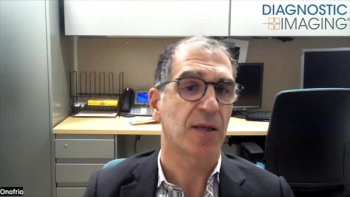
Workstation face-off proves popular way to test systems
When it comes to evaluating 3D workstations, the proof is in the clicks-the fewer the better. That's the consensus of attendees at a workstation face-off event held during the Society of Computed Body Tomography and Magnetic Resonance annual meeting in South Beach, FL, in March.
When it comes to evaluating 3D workstations, the proof is in the clicks-the fewer the better. That's the consensus of attendees at a workstation face-off event held during the Society of Computed Body Tomography and Magnetic Resonance annual meeting in South Beach, FL, in March.
In a showdown pitting workstations from GE, Philips, Siemens, TeraRecon, and Vital Images, imaging specialists navigated through five clinical cases ranging from cardiac to colon applications. Presenters, who had received raw data files in advance of the event, had five minutes to identify salient clinical details and display their findings using volumetric imaging tools.
An audience response system allowed viewers to rank workstation performance on a per-case basis, providing proprietary information for vendors' eyes only, said Dr. Lincoln Berland, president-elect of the SCBT/MR and coordinator of the event. Audience members also ranked features that appeared most useful in manipulating and displaying individual cases.
The ability to load and manipulate a case with as few mouse clicks as possible was the highest ranked workstation feature. This was closely followed by intuitive user interface, automation, clarity of screen layout, and availability of quantification packages. Other categories of import included curved planar reformation capability, image fusion, and cine features.
Stanford University's Multidetector-Row CT meeting pioneered the workstation showdown concept. Such events have proved to be a popular way for radiologists to attain a real-world view of workstation performance.
"People were transfixed by what was going on," Berland said. "They are coming here hoping for answers to questions like, 'What should I buy, and how do I use this thing? What should I be trying to create?'
I think the information to answer those questions was readily available at the session."
Such sessions also allow vendors to showcase new features and get peeks at how competitors' products work when put to the test.
"Vendors take this exercise very seriously," he said. "I think all the vendors made substantial improvements to their software since the Stanford event (in June 2004). You can see lots of convergence in terms of capabilities between various systems."
The big differences among systems remain processing speed, ease of use, and availability of specialized software for clinical applications. Dr. Shawn Teague, an assistant professor of radiology at Indiana University-Purdue in Indianapolis, demonstrated use of the Philips 3D workstation.
"While other presenters essentially used their 3D card with volume rendering on every case, we were able to use specialized packages such as the one for virtual colonoscopy," Teague said. "Philips has a Filet View that curves as it pulls through, so you can see both sides of the colonic fold. Nobody else did that."
To make that and other specialized clinical packages more valuable, vendors should make them available as tools, he said.
"It would be more useful if you could call up a case and then decide which software application you wanted, instead of having to select the application and then pull up the case," he said.
Dr. Michael Poon, chief of cardiac imaging at Cabrini Medical Center in New York City, demonstrated a TeraRecon workstation. Based on thin-client technology, the workstation server can be accessed from anywhere and does not require a dedicated, stand-alone workstation.
In his presentation of a cardiac CT case during the face-off, Poon highlighted a feature that allows users to display a 3D image and overlay it with a 2D multiplanar reformatted image.
"This is useful because if you see something abnormal in the 3D volume-rendered data, you can go straight to that image and create a 2D MPR," he said. "Other features that allow coronary vessel segmentation with the push of a button are also useful for those who are not as savvy with a mouse."
Poon also took note of features on competing workstations, such as GE's vessel tracing software and its coronary plaque analysis package. Regardless of the vendor, such clinical offerings are of little use if the workstation simply can't handle data volume, he said.
"The machine has to be able to load the data without error and then reconstruct it and allow you to manipulate it on the fly. That's very challenging," he said. "You need good hardware in terms of the graphics card and very good software to go from one mode to another without causing glitches and crashing. It's amazing to see how different vendors are trying to overcome these problems."
Newsletter
Stay at the forefront of radiology with the Diagnostic Imaging newsletter, delivering the latest news, clinical insights, and imaging advancements for today’s radiologists.




























